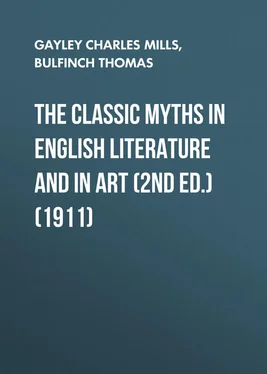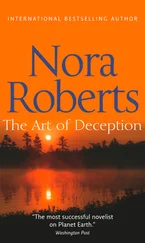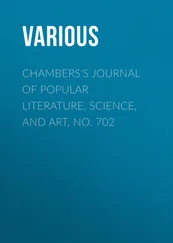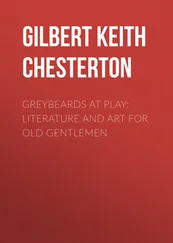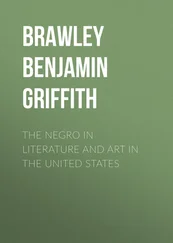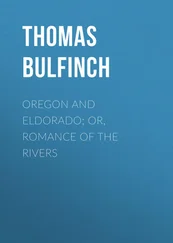Thomas Bulfinch - The Classic Myths in English Literature and in Art (2nd ed.) (1911)
Здесь есть возможность читать онлайн «Thomas Bulfinch - The Classic Myths in English Literature and in Art (2nd ed.) (1911)» — ознакомительный отрывок электронной книги совершенно бесплатно, а после прочтения отрывка купить полную версию. В некоторых случаях можно слушать аудио, скачать через торрент в формате fb2 и присутствует краткое содержание. Жанр: foreign_antique, foreign_prose, на английском языке. Описание произведения, (предисловие) а так же отзывы посетителей доступны на портале библиотеки ЛибКат.
- Название:The Classic Myths in English Literature and in Art (2nd ed.) (1911)
- Автор:
- Жанр:
- Год:неизвестен
- ISBN:нет данных
- Рейтинг книги:4 / 5. Голосов: 1
-
Избранное:Добавить в избранное
- Отзывы:
-
Ваша оценка:
- 80
- 1
- 2
- 3
- 4
- 5
The Classic Myths in English Literature and in Art (2nd ed.) (1911): краткое содержание, описание и аннотация
Предлагаем к чтению аннотацию, описание, краткое содержание или предисловие (зависит от того, что написал сам автор книги «The Classic Myths in English Literature and in Art (2nd ed.) (1911)»). Если вы не нашли необходимую информацию о книге — напишите в комментариях, мы постараемся отыскать её.
The Classic Myths in English Literature and in Art (2nd ed.) (1911) — читать онлайн ознакомительный отрывок
Ниже представлен текст книги, разбитый по страницам. Система сохранения места последней прочитанной страницы, позволяет с удобством читать онлайн бесплатно книгу «The Classic Myths in English Literature and in Art (2nd ed.) (1911)», без необходимости каждый раз заново искать на чём Вы остановились. Поставьте закладку, и сможете в любой момент перейти на страницу, на которой закончили чтение.
Интервал:
Закладка:
Charles Mills Gayley
The Classic Myths in English Literature and in Art (2nd ed.) (1911) / Based Originally on Bulfinch's
TO THE MUSES
Whether on Ida's shady brow,
Or in the chambers of the East,
The chambers of the sun, that now
From ancient melody have ceas'd;
Whether in Heav'n ye wander fair,
Or the green corners of the earth,
Or the blue regions of the air,
Where the melodious winds have birth;
Whether on crystal rocks ye rove,
Beneath the bosom of the sea,
Wandering in many a coral grove,
Fair Nine, forsaking Poetry;
How have you left the ancient love
That bards of old enjoyed in you!
The languid strings do scarcely move,
The sound is forc'd, the notes are few!
O antique fables! beautiful and bright
And joyous with the joyous youth of yore;
O antique fables! for a little light
Of that which shineth in you evermore,
To cleanse the dimness from our weary eyes,
And bathe our old world with a new surprise
Of golden dawn entrancing sea and shore.
PREFACE
In this new edition of "The Classic Myths in English Literature" the former order of materials has been altered in accordance with the advice of the teachers who have had longest experience with the use of the book; the old material has been thoroughly revised; and much new material has been added. Since most people prefer to begin a story at its beginning, and not with the career of its author and his genealogy, I have reserved the history of the myths for the conclusion of the text. Some of the myths have been restated in more careful form. Some short narratives, before omitted, have been included. The sketches of the Iliad and the Odyssey have been considerably expanded; and an outline – which, I hope, will be deemed adequate – of Wagner's version of the Ring of the Nibelung has been appended to the account of Norse and German mythology. That version is, of course, not English literature; but it has come to be received as the classic modern version of the story; and the story is needed, at some time or other, by every lover of music. Fresh examples of the employment of myth in English verse have, where practicable, been incorporated in the text; and some new references will be found in the Commentary.
I have thoroughly revised the list of illustrative cuts, have interpreted the more difficult of the ancient figures, and indicated the sources. The pictures themselves are a decided improvement upon those in the former edition. In the determination of sources for reproduction, I have had the valuable assistance of Dr. E. von Mach, the author of more than one well-known work on ancient art; and to him I am indebted, in addition, for the section on The Classic Myths in Art, which is included in my Introduction. With this new equipment the book should prove more useful to those who here make their first acquaintance with art, especially the art of the ancients, as well as to those who have been in the habit of using it as a guide to paintings and sculptures of mythological subjects in foreign galleries.
Much of our best English poetry lies beyond the imaginative reach of many readers because of their unfamiliarity with the commonplaces of literary allusion, reference, and tradition. Of such commonplaces few are more frequently recurrent than those furnished by the literature of myth.
In view of this consideration, the Academic Council of the University of California, some twenty years ago, introduced into its requirements for entrance in English the subject of Classical Mythology in its relation to English Literature, and recommended, as a textbook for preparation, Bulfinch's "Age of Fable." The experience of English and classical teachers in the schools of the state attested the wisdom of the requirement; but the demand for some textbook adapted to the needs of the classroom made necessary the preparation of this volume. For while "The Age of Fable" offered a tempting collection of Greek, Norse, and Oriental narratives, it was designed neither as a schoolbook nor as a systematized presentation and interpretation of the myths that have most influenced English literature.
At the request of my publishers I undertook at that time such a revision and rearrangement of the materials of "The Age of Fable" as might adapt it to the purposes of teacher and pupil, and to the taste of readers somewhat more advanced in years than those addressed by the original work or by the edition which bore the name of the Reverend Edward Everett Hale. But after a year's work I found that half my material for copy was new, and that the remainder differed in many important respects from the book upon which it was based. Consequently, while the obligation to "The Age of Fable" was acknowledged in full, a different title was selected for the resulting volume. For neither my publishers nor I desired that the scholarship or the taste of Mr. Bulfinch should be held accountable for liberties that were taken with his work.
In "The Classic Myths in English Literature and in Art," Chapters XXIII-XXVII, containing sketches of the Fall of Troy, the Odyssey, the Æneid, and of certain Norse lays, are a revision of corresponding chapters in "The Age of Fable." Chapters VII-XX, and XXII, comprising Myths of the Greater Divinities of Heaven, Earth, the Underworld, and the Waters, Myths of the Lesser Divinities of the same regions, Myths of the Older Heroes and Myths of the Younger Heroes, and the outline of the Trojan War, represent a total rearrangement and recomposition of the original material, section by section, and frequently paragraph by paragraph, – such portions of "The Age of Fable" as have been retained being abridged or rewritten, and, in places too frequent to enumerate, supplemented by new and necessary sentences, paragraphs, and sections. The Introduction, the first six chapters (on the Greek Myths of the Creation, and the attributes of Greek and Roman divinities), Chapters XXI and XXVIII-XXXII (on the Houses concerned in the Trojan War, the Saga of the Volsungs, the Lay of the Nibelungs, Wagner's Ring of the Nibelung, and on the origin, elements, distribution, and preservation of myth), the choice of poetic and artistic illustration, the footnotes referring to sources, and the Commentary are wholly, or essentially, my own. In fact, there is little but the scaffolding of "The Age of Fable" now remaining in the book.
Although in the Index of Mythological Subjects and their Sources the more common myths of some other nations are briefly stated, no myths save those known to the Greeks, Romans, Norsemen, or Germans have been included in the body of the text. The scope of selection has been thus confined for three reasons: first, the regard for necessary limits; second, the desirability of emphasizing only such myths as have actually acclimated themselves in English-speaking lands and have influenced the spirit, form, and habit of English imaginative thought; third, the necessity of excluding all but the unquestionably classic. The term classic , however, is, of course, not restricted to the products of Greece and Rome; nor is it employed as synonymous with Classical or as antithetical to Romantic. From the extreme Classical to the extreme Romantic is a far cry; but as human life knows no divorce of necessity from freedom, so genuine art knows neither an unrelieved Classical nor an unrestrained Romantic. Classical and Romantic are relative terms. The Classical and the Romantic of one generation may merit equally to be the classics of the next. Therefore certain Hellenic myths of romantic spirit or construction have been included in this work, and certain Norse and German myths have not been excluded. Whatever is admitted, is admitted as first-class: first-class, because simple, spontaneous, and beautiful; because fulfilling the requirements of perennial freshness, of æsthetic potency, and of ideal worth.
Читать дальшеИнтервал:
Закладка:
Похожие книги на «The Classic Myths in English Literature and in Art (2nd ed.) (1911)»
Представляем Вашему вниманию похожие книги на «The Classic Myths in English Literature and in Art (2nd ed.) (1911)» списком для выбора. Мы отобрали схожую по названию и смыслу литературу в надежде предоставить читателям больше вариантов отыскать новые, интересные, ещё непрочитанные произведения.
Обсуждение, отзывы о книге «The Classic Myths in English Literature and in Art (2nd ed.) (1911)» и просто собственные мнения читателей. Оставьте ваши комментарии, напишите, что Вы думаете о произведении, его смысле или главных героях. Укажите что конкретно понравилось, а что нет, и почему Вы так считаете.
